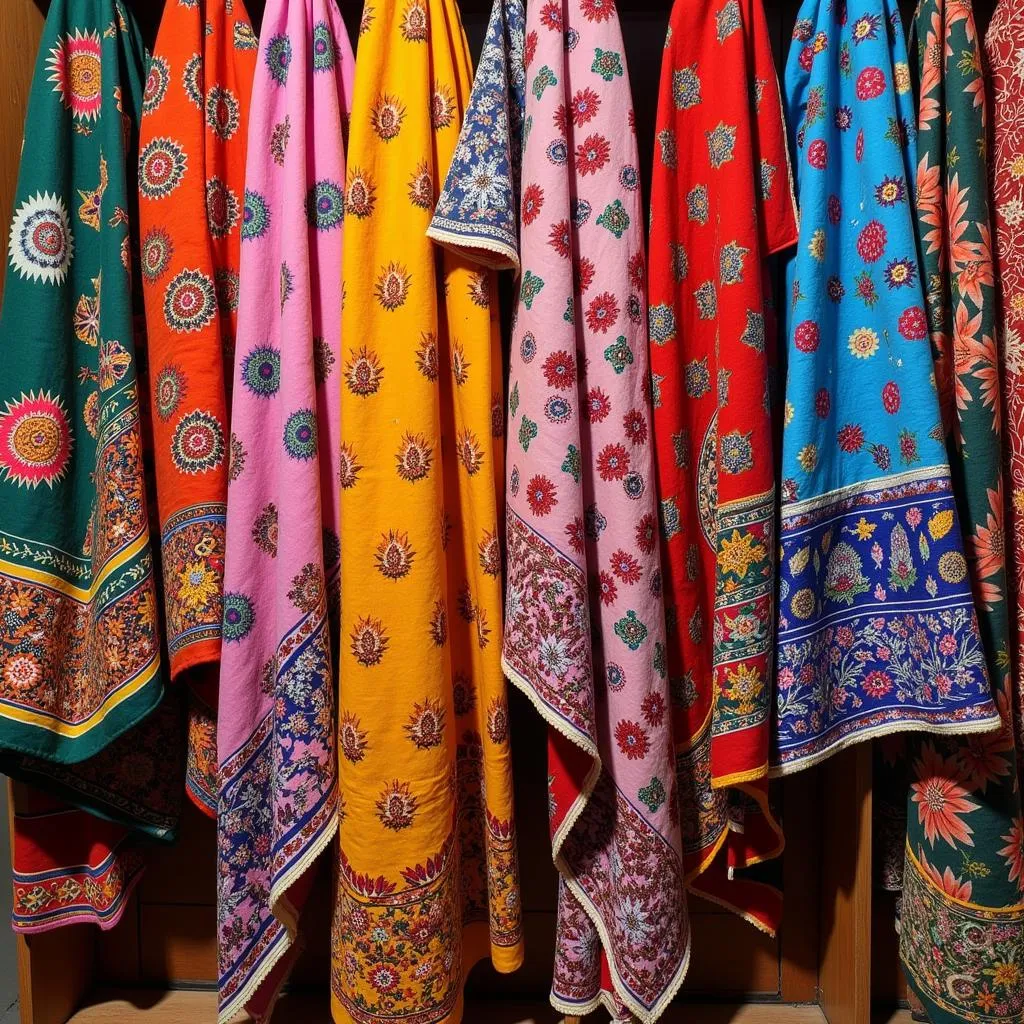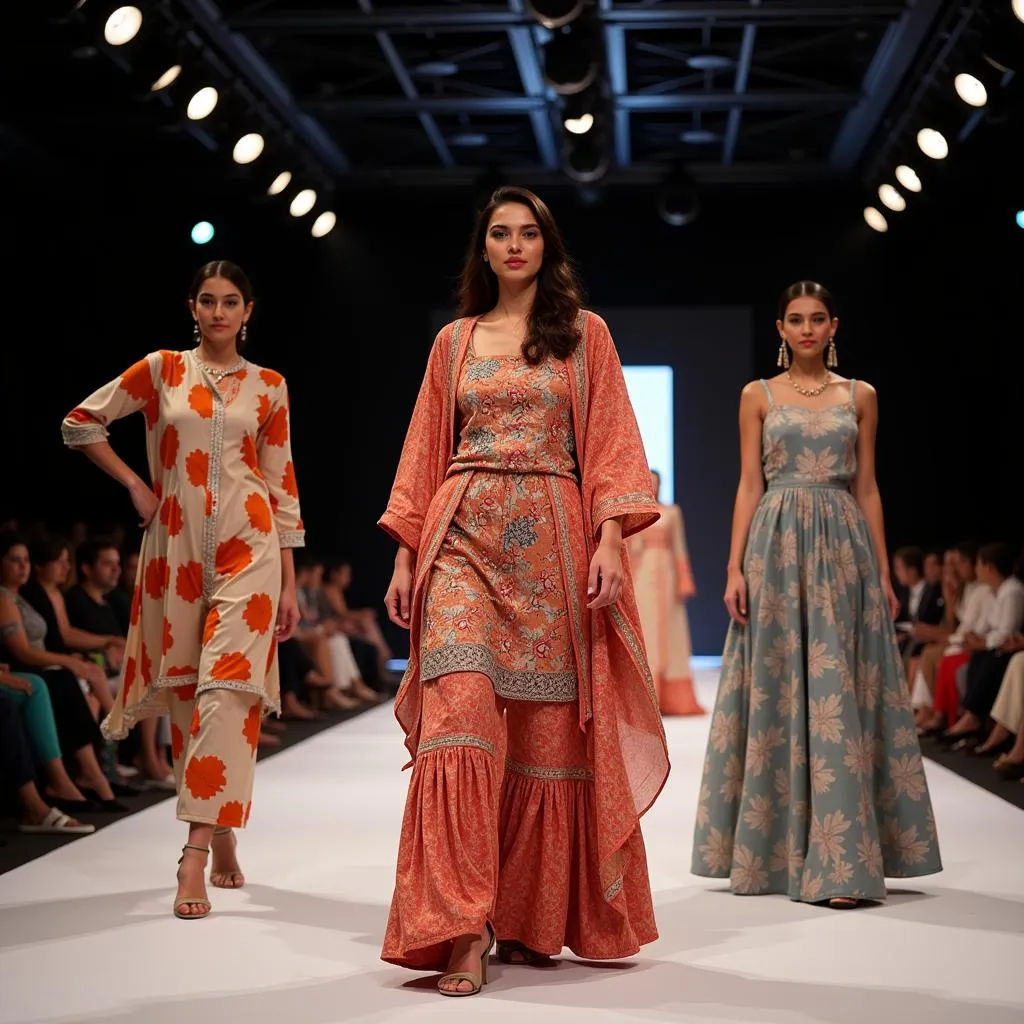The textile industry is the backbone of Pakistan’s economy, and within this vibrant sector, fabric design plays a pivotal role. From the bustling textile mills of Faisalabad to the intricate handloom weaving traditions of Sindh, Pakistan boasts a rich and diverse tapestry of fabric design, catering to both domestic and international markets.
The Heritage of Fabric Design in Pakistan
Pakistan’s heritage of fabric design is deeply rooted in its history and culture. The ancient Indus Valley Civilization, dating back to 3000 BCE, showcased sophisticated textile production techniques, as evidenced by archaeological findings of woven cotton and silk fabrics. Over the centuries, various influences, from Persian and Mughal artistry to British colonial rule, have shaped and enriched Pakistani fabric design.
Traditional Techniques and Motifs
Traditional Pakistani fabric design is renowned for its intricate craftsmanship and exquisite motifs. Handloom weaving, block printing, embroidery, and tie-dye are some of the age-old techniques that continue to be practiced today, passed down through generations of skilled artisans.
- Ajrak: A unique form of block printing using natural dyes, predominantly found in Sindh, characterized by intricate geometric patterns and deep indigo hues.
- Khadi: Hand-spun and hand-woven fabric, known for its texture and breathability, often used for traditional garments like the kurta and shalwar.
- Phulkari: Delicate and colorful embroidery from Punjab, featuring floral motifs and intricate threadwork.
- Balochi Embroidery: Bold and vibrant embroidery from Balochistan, often incorporating mirrors and metalwork.
 Pakistani Traditional Fabric Design
Pakistani Traditional Fabric Design
Modern Trends in Fabric Design in Pakistan
While Pakistan holds fast to its traditional techniques and motifs, the fabric design industry is also embracing modern trends and innovations. Contemporary Pakistani designers are experimenting with new fabrics, color palettes, and patterns, creating unique and innovative designs that cater to a global audience.
Digital Printing
Digital printing has revolutionized the textile industry, allowing for greater precision, speed, and a wider range of designs. Pakistani designers are leveraging digital printing to create intricate patterns, photorealistic prints, and customized designs, pushing the boundaries of creativity in fabric design.
Sustainable and Ethical Practices
With growing awareness about the environmental impact of the fashion industry, there is a rising demand for sustainable and ethical fabrics. Pakistani designers are responding by incorporating organic cotton, bamboo, and recycled materials into their creations. Additionally, there is a focus on fair trade practices and ethical sourcing, ensuring the well-being of artisans and workers.
 Modern Pakistani Fabric Design
Modern Pakistani Fabric Design
The Future of Fabric Design in Pakistan
The future of Fabric Design In Pakistan is bright, with immense potential for growth and innovation. The government is actively supporting the textile industry, providing incentives and infrastructure development to promote exports and attract foreign investment. Moreover, Pakistani designers are gaining international recognition for their creativity and craftsmanship, showcasing their collections at prestigious fashion weeks around the world.
Education and Training
To ensure the continued success of the fabric design industry, there is a need for focused education and training programs to nurture young talent and equip them with the necessary skills. Several design institutes across the country offer specialized courses in textile and fashion design, providing aspiring designers with a platform to hone their craft and explore new horizons.
Embracing Technology
Technology will continue to play a crucial role in the evolution of fabric design in Pakistan. From 3D printing to artificial intelligence, new tools and techniques are emerging that can further enhance the design process, improve efficiency, and create even more innovative and sustainable fabrics.
Conclusion
Fabric design in Pakistan is a testament to the country’s rich cultural heritage, skilled craftsmanship, and creative spirit. From the intricate handloom weaves of the past to the innovative digital prints of the present, Pakistani fabric design continues to evolve, captivating the world with its beauty, quality, and unique blend of tradition and modernity.
FAQs
What are some popular Pakistani fabrics?
Some popular Pakistani fabrics include:
- Lawn
- Khaddar
- Cotton Silk
- Chiffon
- Velvet
Where can I buy Pakistani fabrics online?
Many online retailers specialize in Pakistani fabrics, offering a wide range of designs and materials.
Are Pakistani fabrics expensive?
The price of Pakistani fabrics varies depending on the material, design, and craftsmanship. You can find both affordable and high-end options.
You Might Also Like
Need Assistance?
For any inquiries or assistance, please contact us:
Phone: +923337849799
Email: [email protected]
Address: Dera Ghazi Khan Rd, Rakhni, Barkhan, Balochistan, Pakistan
Our customer support team is available 24/7 to assist you.
Leave a Reply